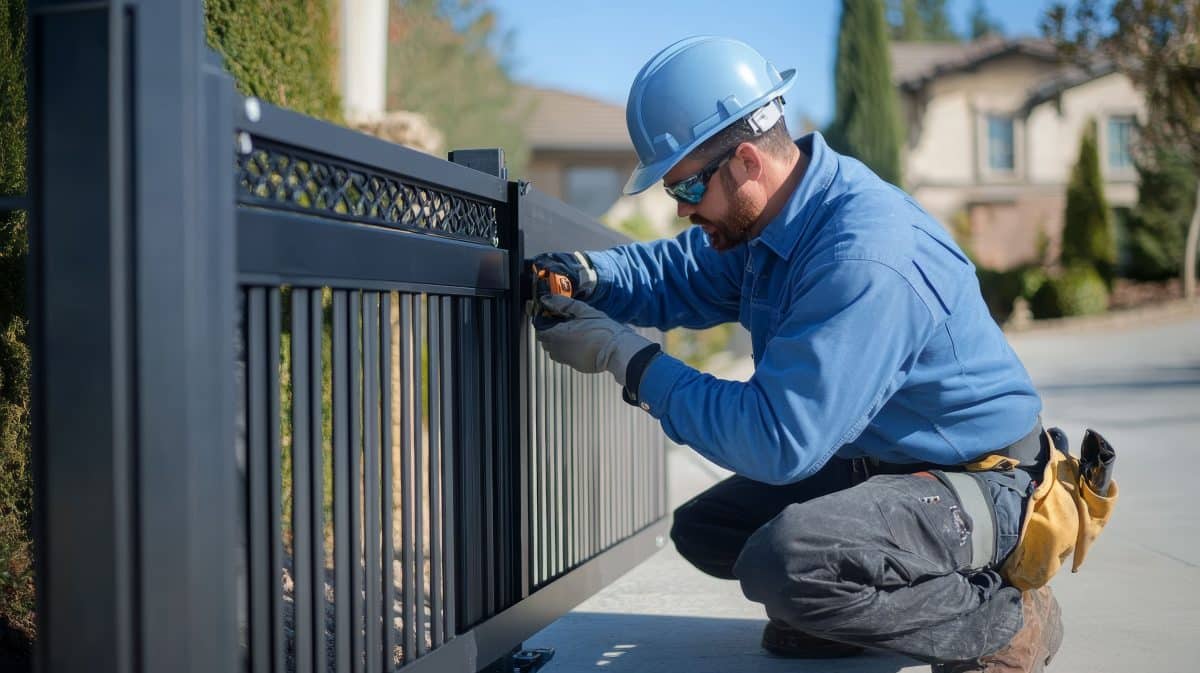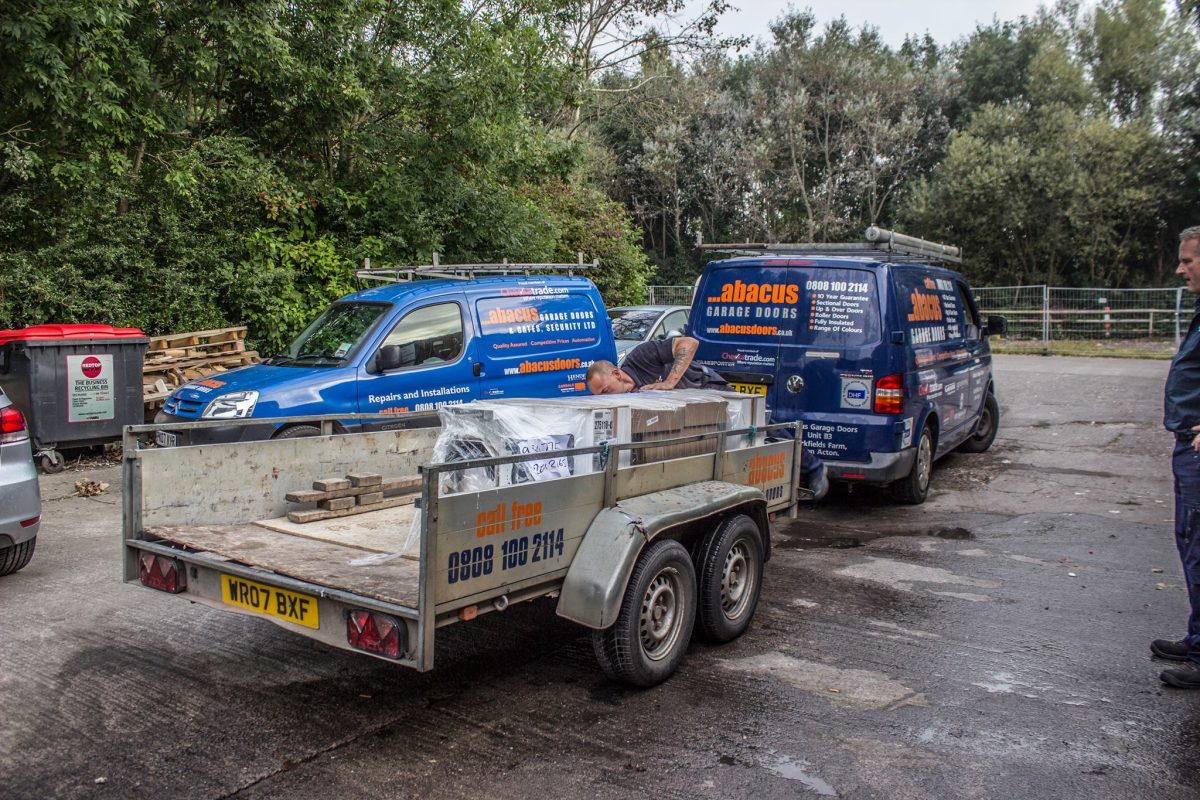
Electric gates are an excellent addition to any property, offering security, privacy, and convenience at the touch of a button. For homeowners, landlords, and small-business owners, automated gates streamline access control while adding a professional or high-end aesthetic. However, like any mechanical system, electric gates are subject to occasional faults and malfunctions. And when things go wrong, the result is more than just inconvenience — it can be a major disruption to your routine and a potential security risk.
Fortunately, many common electric gate problems can be diagnosed and fixed at home with a few tools and a bit of know-how. In this guide, Abacus Garage Doors walks you through six of the most frequent issues, complete with practical, step-by-step solutions.
1. Gate Refuses to Open or Close

Symptoms: The gate is unresponsive when using the remote or control panel. The motor may hum, but the gate doesn’t move.
Likely Causes: Blocked safety sensors, motor overload, or insufficient power supply.
DIY Fix:
- Check the sensors for obstructions like leaves, dirt, or cobwebs. Wipe the lenses clean.
- Inspect the power supply to ensure proper voltage. Tighten any loose wires.
- Manually disengage the clutch to reset the motor and attempt operation again.
Prevention Tip: Establish a monthly sensor-cleaning routine and check battery or backup power quarterly to avoid outages.
2. Gate Hums but Moves Erratically
Symptoms: The motor is running, but the gate jerks, stops, or suddenly reverses.
Likely Causes: Misaligned tracks or rollers, or lack of lubrication.
DIY Fix:
- Visually inspect the track and roller alignment. Use a spanner to adjust mounting bolts so that rollers sit evenly.
- Apply a silicone or lithium-based lubricant to the hinges and rollers.
- Cycle the gate open and closed slowly to check for smooth operation.
Prevention Tip: Perform track and roller checks twice a year and lubricate moving parts as part of your seasonal maintenance.
3. Gate Makes Loud Noises

Symptoms: Squeaking, grinding, or clanking sounds when the gate operates.
Likely Causes: Debris in the track, worn bearings, or metal-on-metal contact.
DIY Fix:
- Remove any visible debris, stones, or grit from the gate track. Even small obstructions can cause excess friction and noise.
- Examine the roller bearings and hinges for signs of wear or corrosion. Replace noisy or stiff components with OEM-approved parts.
- Apply a high-quality lubricant to all moving joints, including hinges, pivot points, and tracks. Be sure nothing is bent or misaligned during this process.
- Operate the gate slowly after maintenance to confirm the noise has been resolved.
Prevention Tip: Regularly clean the track area and schedule annual inspections of bearings, hinges, and alignment to catch wear early. The HSE Safety Advice on Powered Gates is a great source with further information to make sure any repairs are being done safely.
4. Remote Control Fails to Operate Gate
Symptoms: The remote doesn’t activate the gate, though the keypad or manual control may still work.
Likely Causes: Dead remote battery, interference from other electronics, or misprogramming.
DIY Fix:
- Replace the battery in the remote with a fresh CR2032 (or model-specific type).
- Re-sync the remote with the control board following the manufacturer’s instructions.
- Check for and relocate any sources of interference such as LED lights or Wi-Fi routers near the gate.
Prevention Tip: Change the remote battery annually and store it in a dry place to avoid corrosion.
5. Safety Sensor Keeps Reversing Gate

Symptoms: The gate starts to close but stops and reopens or fails to close completely.
Likely Causes: Misaligned or blocked safety sensors.
DIY Fix:
- Clean both sensor lenses gently with a soft, damp cloth.
- Use LED alignment indicators (if available) to verify both sensors are facing each other perfectly.
- Check sensor wiring for corrosion or loose connections.
Prevention Tip: Clean your sensors every quarter and protect them from garden spray systems or puddles.
Helpful guide: How to troubleshoot gate sensor issues
6. Gate Controller Displays Error Codes
Symptoms: The control panel displays a numeric or lettered error code, and the gate doesn’t function.
Likely Causes: Error codes vary but may signal motor stall (E1), sensor malfunction (E2), or overheating (E3).
DIY Fix:
- Refer to your control system manual to identify the code.
- Resolve the issue as instructed – for example, clearing an obstruction for a motor stall.
- Power down the system for 30 seconds and restart to clear the code.
Prevention Tip: Keep your manual in a safe place and log any recurring codes to detect patterns.
More insights: Electric gates – common problems and solutions
Keep Your Gate Running Smoothly

Most electric gate problems are surprisingly simple to troubleshoot and resolve yourself. With regular cleaning, alignment checks, and simple maintenance, you can avoid many issues altogether.
To stay organised, keep a basic maintenance log noting when you clean sensors, lubricate rollers, or experience any error codes. This can help identify patterns and serve as a useful reference if a professional visit is ever needed.
However, some problems require specialist knowledge — especially electrical faults or structural misalignments. If your DIY efforts don’t solve the issue, or you’re unsure how to proceed safely, it’s best to call in the professionals.
Abacus Garage Doors offers reliable, expert support across all electric gate systems, including:
Need more help troubleshooting? Read our full guide: Why isn’t my automatic gate opening? Alternatively, reach out to Abacus Garage Doors for support you can trust.
